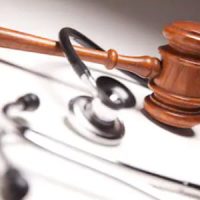Contaminated Pathology Sample Behind Man’s Wrongful Death By Medical Malpractice

The tragic story of medical malpractice may be coming from across the globe, but it does raise interesting points about negligence in pathology departments here in Florida. The Australian Broadcasting Corporation recently reported on a man who was diagnosed with lung cancer in 2018 after getting a biopsy of lung tissue. Pathologists had examined the sample, and the results led oncologists to decide to treat via surgery. Surgeons removed the affected tissue, leaving the patient vulnerable to respiratory conditions. He contracted pneumonia and died in 2019.
An investigation into the man’s death revealed that the biopsy sample had become contaminated as it was being processed by pathologists. It was a different patient’s lung tissue that led to the diagnosis of lung cancer, the decision to perform surgery, and ultimately the victim’s death. In the US, medical malpractice laws cover these unfortunate situations and allow patients to recover compensation after a medical error. You should discuss concerns with a Tampa medical malpractice lawyer, and some information about biopsy malpractice is also helpful.
Examples of Negligence in Pathology Departments: A biopsy is one of the most powerful tools health care providers have available for diagnosing certain conditions, especially cancer. The process involves removal of tissue that physicians believe carries information about the patient’s medical condition. The sample is preserved, documented, and forwarded to the pathology lab for assessment. Pathologists use high-powered microscopes, centrifuges, water and chemical baths, blood analysis machinery, and many other tools as part of the diagnosis process.
Some of the most common errors health care providers make with biopsies include:
- Ordering a biopsy when not warranted by the patient’s symptoms or condition;
- Not properly capturing, sterilizing, and securing the sample tissue;
- Documentation mistakes, such as mislabeling or mixing up samples from multiple patients; and,
- Improper processing of the biopsy tissue, especially since the sample is usually destroyed through analysis.
How Mistakes with Biopsies Snowball: The story of the Australian man is a situation of a false-positive misdiagnosis, in which all treatment decisions and care plans are based upon bad information. In his case, health care providers opted to perform surgery that would not have been recommended if the biopsy had been properly processed. A medical expert even testified that the appropriate plan of action would be ongoing monitoring to see if the man’s condition changed or worsened.
In other cases of false-positive misdiagnosis, a patient might undergo severe chemo, radiation, or other harsh therapies with severe side effects. The snowball effect also impacts situations where a false-negative misdiagnosis is based upon a bad biopsy. An error by a pathologist may not reveal the patient’s medical condition, so he or she does not receive essential treatment.
Call Now to Speak to a Florida Medical Malpractice Lawyer
This horrific ordeal demonstrates how a mistake by a health care provider can snowball into serious injuries and even death for the patient. For more information, please contact Greco & Wozniak P.A. You can call 813.223.7849 or visit us online to set up a free consultation at our offices in Tampa, FL.
Source:
abc.net.au/news/2023-02-08/contaminated-pathology-sample-led-to-misdiagnosis-inquest-hears/101947134

